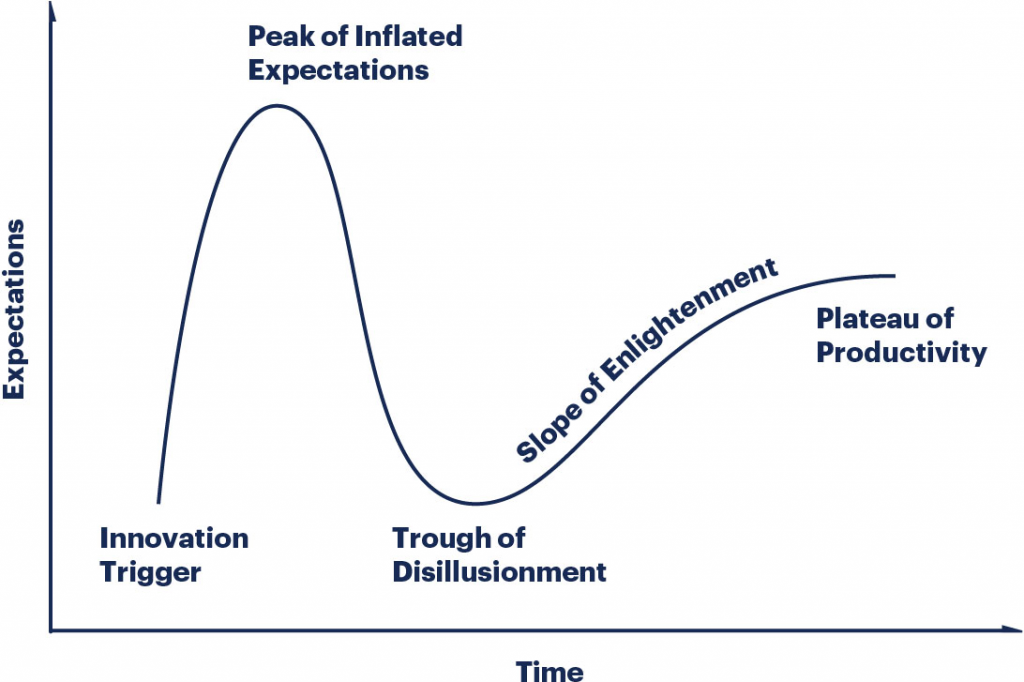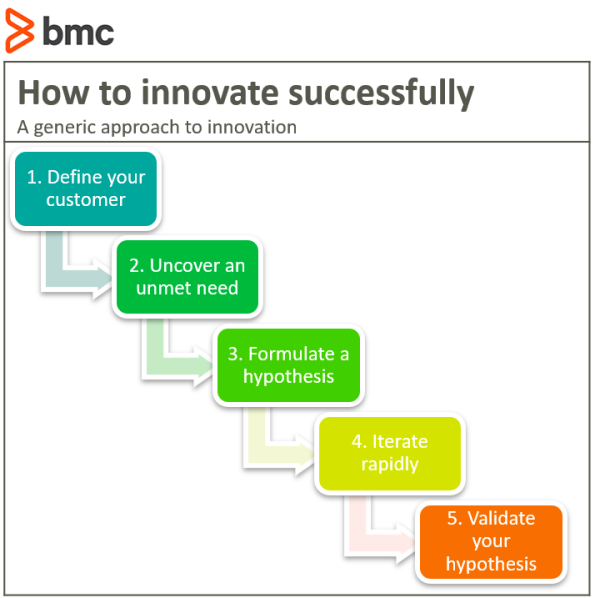When any two people meet and begin a relationship, both parties come together with an ability to dream. They both make contributions to a dream, and the possibilities can be endless. Dreams are expectations. In an undisciplined practice, dreams get to be fantastic, ungrounded expectations. This period of ideation is the honeymoon period—the relationship, the idea thrives on excitement alone.
Words and minds enable dreams. Investments even pour in. Together, the parties form an idea for what the product should be. It is the task of the dreamer to go big—as big as possible. It is up to others to tether them to reality. In product development, engineers and accountants are counterparts to the dreamers. They tell the dreamers what is possible and what is not. Then, between the dreamers and the engineers, the dreamers’ expectations face the hard truth of reality, and a product can really take its shape. The Statue of David finally sheds its rocky shell.
When expectations go beyond what is possible, people flock to the concept. As if in awe by magic, or to witness the impossible, or to be a part of something new and fashionable, people gather to see whether the expectations are accurate—whether there will be innovation.
This moment is the peak of inflated expectations—let’s take a look.
What is the peak of inflated expectations?
In in the Gartner Hype Cycle, the peak of inflated expectations is the second of five phases in product development hype. It is important to see where value meets expectations. Hype is important to the discoverability of a product. Hype creates attraction, and attraction admits existence.

(Source)
The ideal situation is to discern between the hype and the value—this is the aim of the hype cycle. The bad case occurs when a product relies on hype alone. The good case is when a product’s hype is deserved, and it rests sturdily on a growing foundation of research. In any given moment, it is not an easy task to make the distinction. Only in hindsight can the distinction become obvious.
On the one hand, if people are gathering to see something incredible, nobody wants to miss it for fear of missing out. But on the other, if it is not really that incredible, dollars, time, and attention is spent on something that never deserved the attention in the first place—in this case, you get false prophets.
This phase of inflated expectations may be characterized by:
- Excitement
- More buzz than proof
- Research bearing out (or not) the viability of the initial idea
- An exploration of alternative options
When hype fails to create value
Theranos had a dream. It needed to build hype for that dream in order to create its product. As more and more people bought into their dream, Theranos received more resources to realize the dream it sold. After a while, Theranos could not create the product they said they would provide, and a pivotal moment occurred.
The expectations Theranos created were incredible, but the value they promised was unattainable. Their inability to engineer the expectations made them face a decision:
- Let down everyone’s expectations of the product and tell the truth about the poor progress on their dream product.
- Continue with the dream and find a way to cheat.
Of course, we know that Theranos chose to cheat.
The expectations they sold successfully built an incredible dream many supported. They attracted big name investors and were given loads of money. Theranos promised to positively change people’s lives forever. With so much attraction, and the desire for their success, failure actually became more costly than being discovered as a fraud. In Theranos’ best-case scenario, they could engineer the product and deliver the dream. In the worst-case scenario, at least in the eyes of its founders, Theranos fails to deliver the dream product they sold.
Theranos made an error in its ability to tell its narrative. Its founders could only navigate one possible narrative: either success or failure. They had an inability to adapt their narrative to the reality of the situation, and so the founders followed its initial track to its tragic conclusion. If it had been able to adapt, perhaps it would have found alternate solutions. It could fail to deliver on its initial expectations but find new possibilities and set new expectations. Instead, Theranos, eventually, could not make good on its promise, and ended as a failed Disneyland: everyone who’d bought admission got to stand disappointed in a tumbleweed-filled wasteland.
Theranos couldn’t grow past its inflated expectations. It was caught in its expectations and failed to find enough fuel to continue its propulsion forward. If it were to have found and created a product, the company would have had something substantial to speak for itself—Theranos would no longer need to rely on creating a stream of inflated expectations.
Where value meet expectations
Many stories are not tragic. Products and services provided by the government are provided largely because of hype. A government might provide products that people expect, but nobody has yet to be able to create on their own. This is the definition of a public good.
Government subsidizes many goods that people expect to exist—expect to have—in an effort to fuel the hype around those products and bring them into existence. Government subsidizes things like education, renewable energies, crop purchases, and healthcare. In some cases, it even ventures out to create these services itself. In a way, government is an early investor into many, many goods.
Some big companies that rose seemingly overnight in the early 2010s grew where value and hype met half-way. The new landscape of technology allowed for a new breed of company; one that emerges quickly and dominates the field just as quickly. Thanks to computers and the internet, people can communicate in various ways. New technologies could be adopted in just a few years rather than 10-20 years.
Facebook and Uber had a lot of hype and provided a lot of immediate value. These company cultures, then, got to ride out the full wave of their expectations and see the hype curve to its end.
More than a decade ago, Facebook promised that it would create a connected world. None of us really knew what this meant. Facebook said that it would allow friends to connect with each other, send each other updates, see how other people were dating, see what everyone was buying.
- Some expectations were fulfilled. People who joined Facebook got to connect with friends. They could see what their friends were doing, they could share photos.
- Some expectations couldn’t be met. The company promised to advertisers that when an individual would buy something, it would show to their friend group that someone bought that item. This makes a very desirable, word-of-mouth type of advertising available to advertisers. As the feature rolled out, users expressed privacy concerns (some users did not want their friends to see what they bought on Amazon), and Facebook had to redefine how to get a good service to its paying advertisers.
Facebook navigated its expectations by allowing the expectations of their products and product features to be A-B tested. Their promise was not on any single feature, but on their mission to create a more connected world. They would do this in whatever way they could—whatever way worked.

In the ideal world, where a new product succeeds, both engineering and dreams grow together in tandem: The peak of inflated expectations never rises too high. The fall into depression and disillusionment isn’t too great. All participants ride on a steady line of enlightenment.
The Gartner Hype Cycle
Explore every phase of hype:
- The Innovation Trigger
- The Peak of Inflated Expectations
- Trough of Disillusionment
- Slope of Enlightenment
- Plateau of Productivity
Additional resources
For more on product development and innovation, check out these resources:
- DevOps Guide
- BMC DevOps Blog
- BMC Business of IT Blog
- The Software Development Lifecycle (SDLC): An Introduction
- Guide to IT Leadership & Best Practices
These postings are my own and do not necessarily represent BMC's position, strategies, or opinion.
See an error or have a suggestion? Please let us know by emailing blogs@bmc.com.






